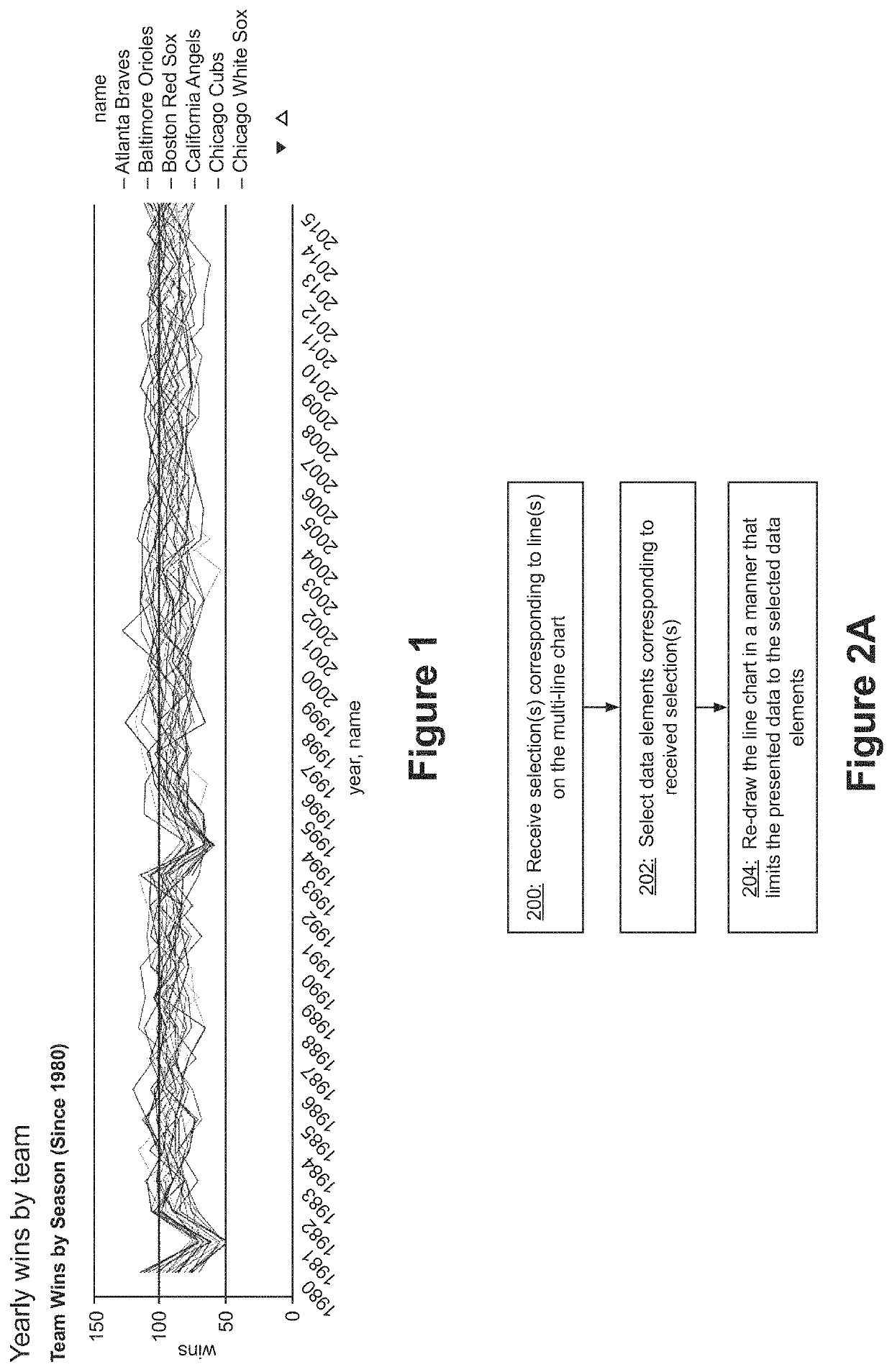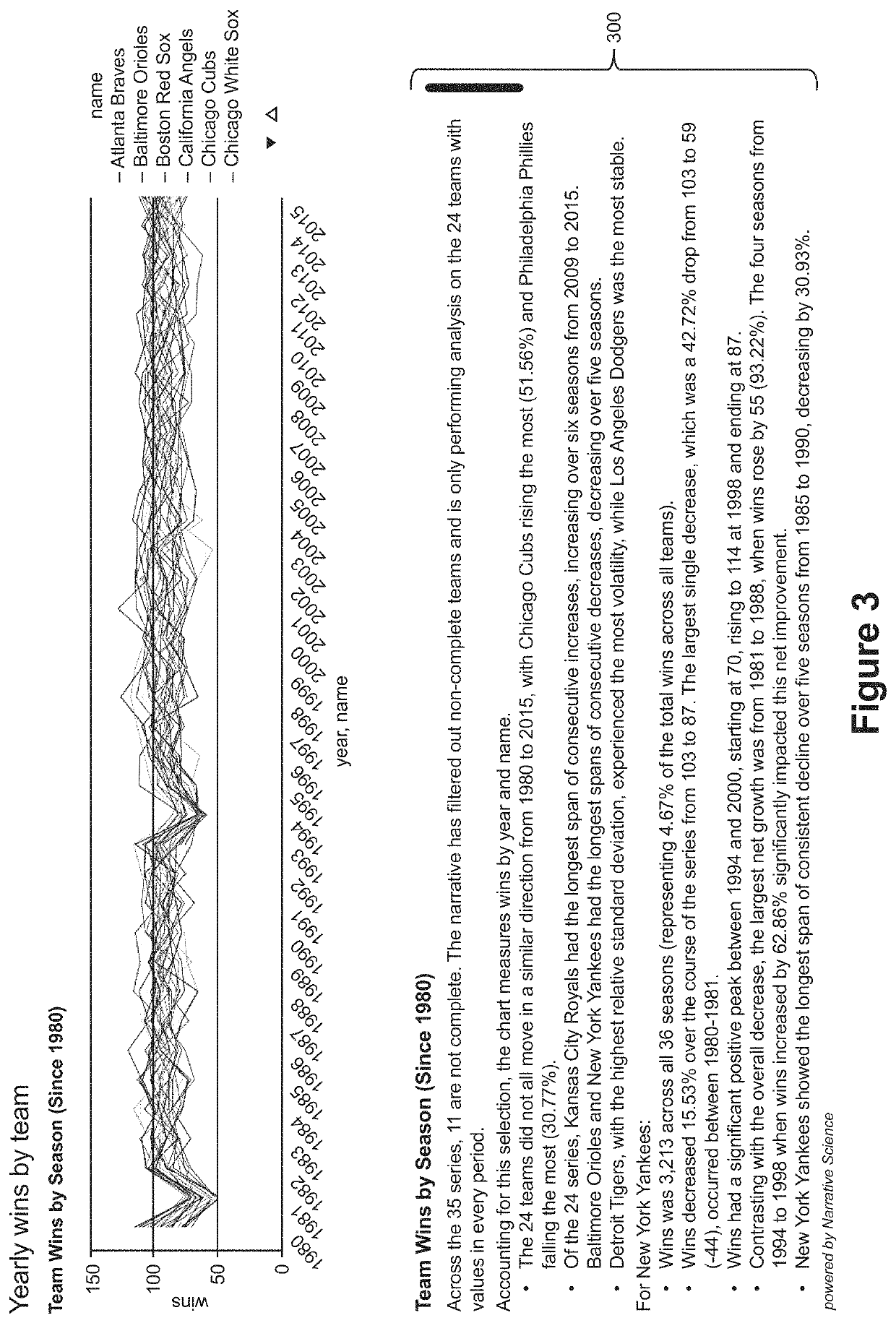Applied artificial intelligence technology for evaluating drivers of data presented in visualizations
an artificial intelligence and visualization technology, applied in the field of data visualization, can solve problems such as difficulty in understanding and the inability of conventional visualization systems to provide users with an automated means
- Summary
- Abstract
- Description
- Claims
- Application Information
AI Technical Summary
Benefits of technology
Problems solved by technology
Method used
Image
Examples
Embodiment Construction
[0051]FIG. 4 depicts an example process flow for focusing visualizations with the aid of narrative analytics. The process flow of FIG. 4 can be executed by a processor in cooperation with computer memory. For ease of illustration, FIG. 5 depicts an example system for executing the process flow of FIG. 4. The system of FIG. 5 includes a visualization platform 500 and narrative analytics 510. The visualization platform provides the visualization data 502 that serves as the source for a visualization produced by the visualization platform. The narrative analytics 510 can access this visualization data 502 through an application programming interface (API) or other suitable data access / sharing techniques. Examples of visualization platforms that may be suitable for use with the system of FIG. 5 include the Qlik visualization platform and the Tableau visualization platform. An example of a narrative analytics platform 510 that is suitable for use with the system of FIG. 5 is the Quill na...
PUM
 Login to View More
Login to View More Abstract
Description
Claims
Application Information
 Login to View More
Login to View More - R&D
- Intellectual Property
- Life Sciences
- Materials
- Tech Scout
- Unparalleled Data Quality
- Higher Quality Content
- 60% Fewer Hallucinations
Browse by: Latest US Patents, China's latest patents, Technical Efficacy Thesaurus, Application Domain, Technology Topic, Popular Technical Reports.
© 2025 PatSnap. All rights reserved.Legal|Privacy policy|Modern Slavery Act Transparency Statement|Sitemap|About US| Contact US: help@patsnap.com



